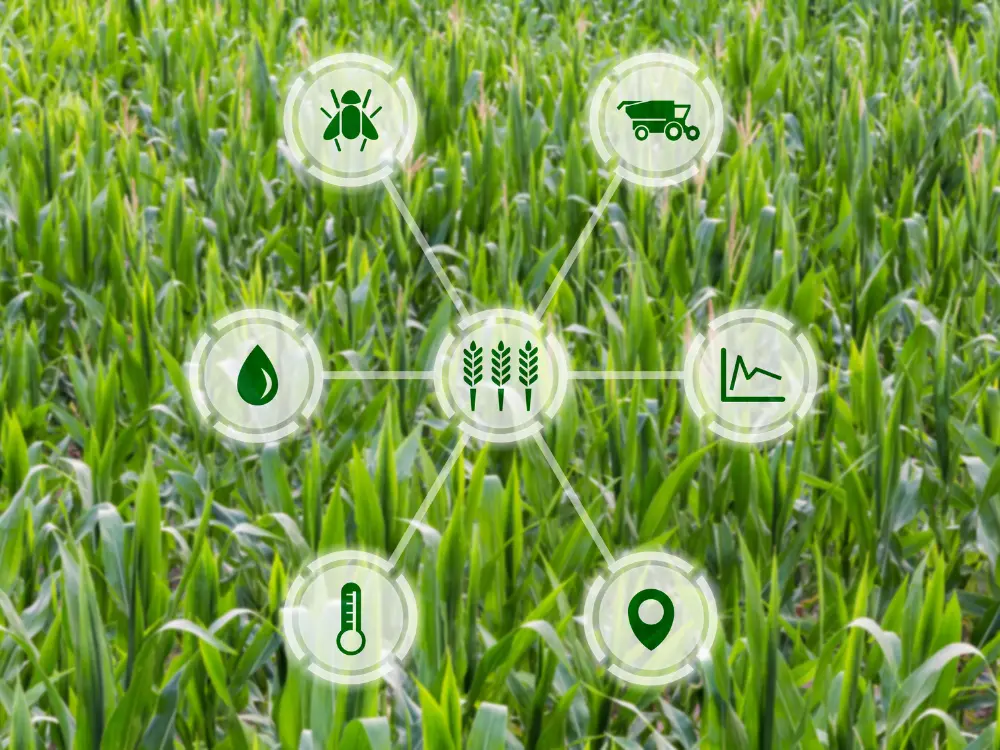Agriculture has always been the heart and soul of India, employing nearly half of the country’s workforce. However, the sector has faced numerous challenges over the years, including climate change, resource scarcity, and market volatility. To tackle these issues, agritech innovations are stepping up, offering farmers new ways to improve productivity, sustainability, and profitability. Here, we explore the top five agritech innovations that are currently transforming Indian agriculture.
1. Precision Agriculture: Farming with Pinpoint Accuracy
Precision agriculture is all about making farming more accurate and controlled. This innovative approach uses technologies like GPS, sensors, and drones to monitor and manage crops and soil conditions with pinpoint accuracy.
Farmers can use data collected from these technologies to make informed decisions about where to plant, how much water to use, and when to apply fertilizers and pesticides. This reduces waste, saves resources, and increases crop yields. In India, precision agriculture is helping farmers maximize their output while minimizing environmental impact, making it a game-changer for sustainable farming.
**Example in India**: In states like Punjab and Haryana, precision agriculture is being used to monitor soil health and manage water resources more effectively, leading to higher crop yields and reduced input costs.
2. Smart Irrigation Systems: Efficient Water Management
Water scarcity is a major issue for Indian farmers, especially in arid and semi-arid regions. Traditional irrigation methods often result in water wastage and are not efficient enough to cope with the growing demands of agriculture. Smart irrigation systems, powered by sensors and AI, are addressing this problem by optimizing water use.
These systems monitor soil moisture levels and weather conditions in real-time, providing precise irrigation recommendations. Some systems even automate the irrigation process, ensuring that crops receive the right amount of water at the right time. This not only conserves water but also enhances crop health and yields.
Example in India: In Maharashtra, smart irrigation systems are being adopted in grape farming, where precise water management is critical for achieving high-quality produce.
3. Drones in Agriculture: The Sky is No Longer the Limit
Drones are revolutionizing the way farmers monitor and manage their crops. These flying devices can cover large areas quickly, capturing high-resolution images and data that can be used to assess crop health, detect pests, and even map fields.
With the help of drones, farmers can identify problem areas in their fields that might need more attention, such as spots suffering from water stress or pest infestations. This allows for targeted interventions, reducing the need for blanket spraying of pesticides and fertilizers.
Example in India: In Andhra Pradesh, drones are being used in rice fields to monitor crop health and optimize the application of fertilizers, leading to better crop management and reduced input costs.
4. Blockchain Technology: Transparency from Farm to Fork
Blockchain technology is bringing transparency and traceability to the agricultural supply chain. By using a decentralized ledger system, blockchain records every step of a product’s journey from the farm to the consumer. This ensures that the entire process is transparent, secure, and tamper-proof.
For farmers, blockchain can provide proof of the origin and quality of their produce, which is especially important for organic and specialty crops. It also helps in getting fair prices, as consumers can trust the authenticity of the products they are buying. Additionally, blockchain reduces the chances of fraud and ensures that farmers are fairly compensated for their work.
Example in India: In Kerala, blockchain technology is being used in the spice industry to track the authenticity of premium products like black pepper and cardamom, ensuring that farmers receive fair compensation for their high-quality produce.
5. Artificial Intelligence: The Brain Behind Smart Farming
Artificial Intelligence (AI) is one of the most powerful tools in modern agriculture. AI algorithms can analyze vast amounts of data from various sources—such as weather patterns, soil conditions, and crop health—to provide actionable insights for farmers.
AI-powered tools can predict weather changes, recommend the best time for planting and harvesting, and even forecast market prices. This helps farmers make more informed decisions, reduce risks, and increase their profits. AI is also playing a crucial role in automating tasks like pest detection, crop monitoring, and irrigation management, making farming more efficient.
Example in India: In Tamil Nadu, AI is being used to predict the best sowing times for farmers based on weather data, soil moisture levels, and other factors, leading to better crop outcomes.
Conclusion
Agritech innovations are transforming the landscape of Indian agriculture, offering solutions to some of the most pressing challenges faced by farmers today. From precision agriculture and smart irrigation to drones, blockchain, and AI, these technologies are making farming more efficient, sustainable, and profitable. As these innovations continue to evolve and become more accessible, they hold the promise of ushering in a new era of agricultural prosperity in India, benefiting farmers and consumers alike.
By embracing these technologies, Indian agriculture can not only overcome its current challenges but also pave the way for a brighter, more sustainable future.

